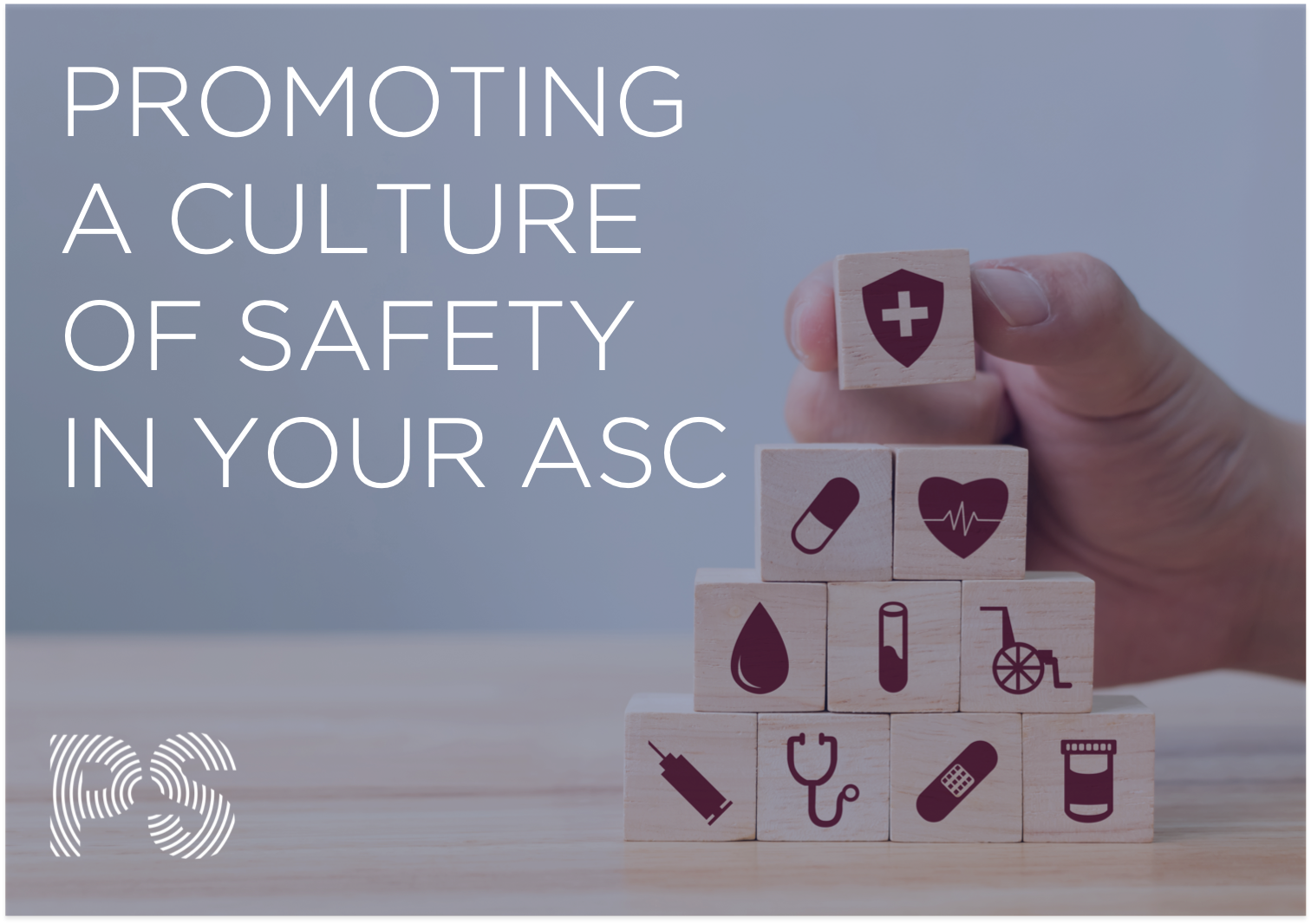
Written by: Crissy Benze, MSN, BSN, RN
Since the first ambulatory surgery center (ASC) opened in 1970, patient safety in the ASC setting has been of paramount importance. To help determine the safety and the quality of health care services provided, today’s state and federal officials examine good examples, data collection, and dissemination activities of facilities. Meanwhile, ASCs are finding that it is important to not only provide high-quality care but to use specific quality measures to carefully document that care. From admission to discharge, patient safety should be at the forefront of every patient care provider’s mind. This is where developing a culture of safety comes into play.
In a culture of safety, people are not merely encouraged to work toward change; they take action when needed. To develop such a culture, leadership engagement is critical. Employees need to visibly see that leadership is committed to change and feel supported and confident in ensuring that safe, quality care is being provided by all. Meanwhile, the messaging around safety must be consistent and upheld, as it can take a while for culture to change.
Ultimately, a culture of safety results from the effective interplay of the following three organizational elements:
- Environmental structures and processes,
- The attitudes and perceptions of workers, and
- Safety-related behaviors of individuals.
Helpful Resources
The goal of developing a culture of safety is first and foremost to decrease errors. Simultaneously, this culture should aim to provide an environment in which staff feel safe in reporting errors and taking action to prevent future occurrences. The Agency for Healthcare Research and Quality (AHRQ) conducted a survey in 2013, which found that while employees generally felt their work environments were safe, they did not feel safe reporting errors. The resources listed below can help advance a sense of safety for staff and patients in your ASC.
- The AHRQ has surveys that can be downloaded and used to survey facility and medical staff on the current culture of safety. Conducting an anonymous survey allows staff to freely participate and share their prospective on safety in the facility. This is important because it will provide insight into the different activities and actions that may need to be taken to improve the safety culture. Use these survey results to conduct a quality improvement study and enact necessary changes.
- The Comprehensive Unit-based Safety Program (CUSP) is a method that can help clinical teams make care safer through improved teamwork, clinical best practices, and the science of safety. The available toolkit provides clinical teams the training, resources, and tools needed to apply the CUSP method and build their capacity to address safety issues.
- The Patient Safety Movement offers registered members free access to actional patient safety solutions for implantation to increase patient safety in their medical facility.
- Life Wings trains leaders to produce documented results in safety, quality, and cost reduction. This program promises to stop patient harm, fix your broken culture, and keep your best staff in the operating room through effective communication training.
A Safe and Reliable Environment
Developing a culture of safety within a health care organization creates a safe and reliable environment built on a foundation of transparency, safety, trust, and accountability between staff and patients. Use the resources mentioned above to help you create structures and processes that will shift the attitudes and perceptions of workers and foster safe behaviors. This way your ASC can proudly claim a culture of safety.
WANT TO LEARN MORE? Watch a Webinar on Culture of Safety with Crissy Benze, presented Tuesday May 21.




